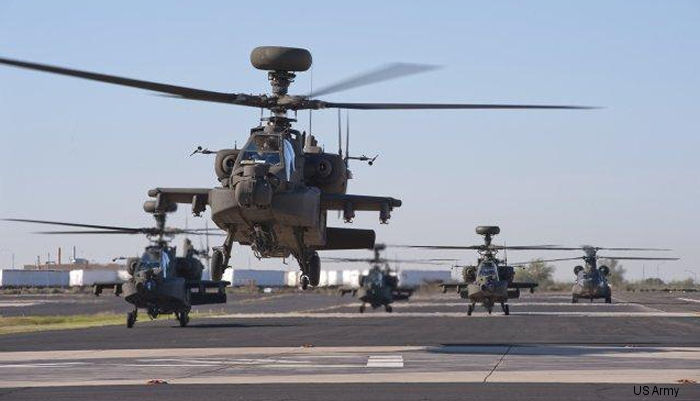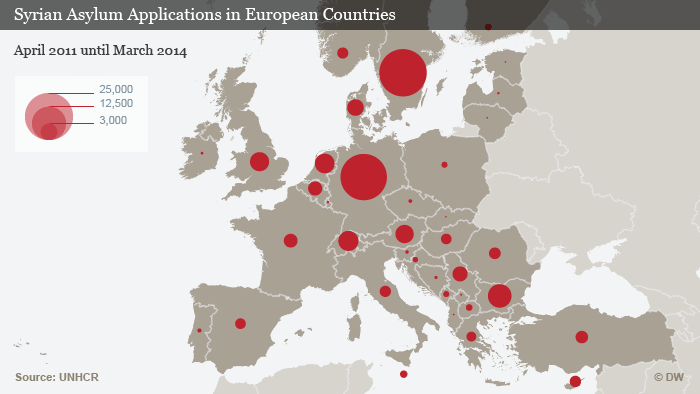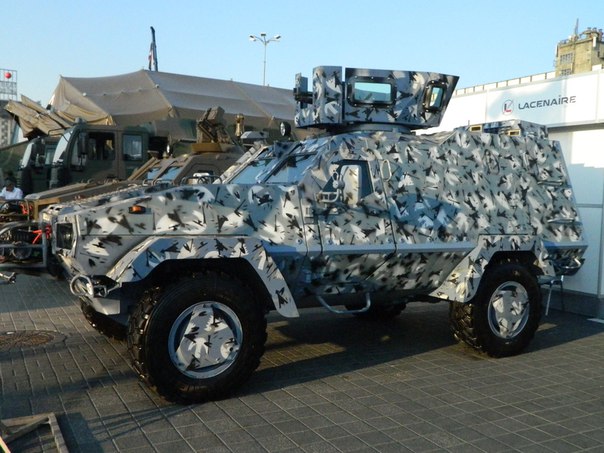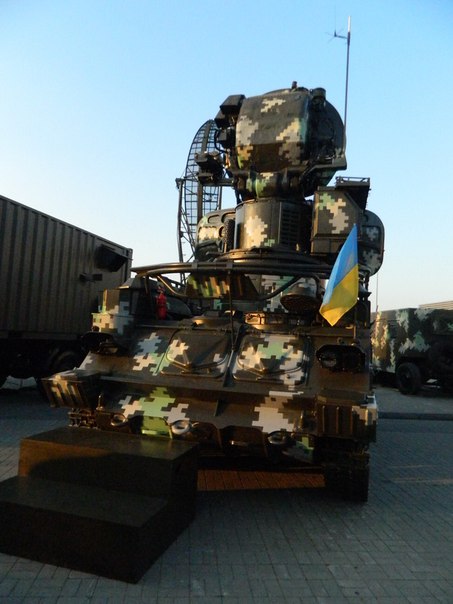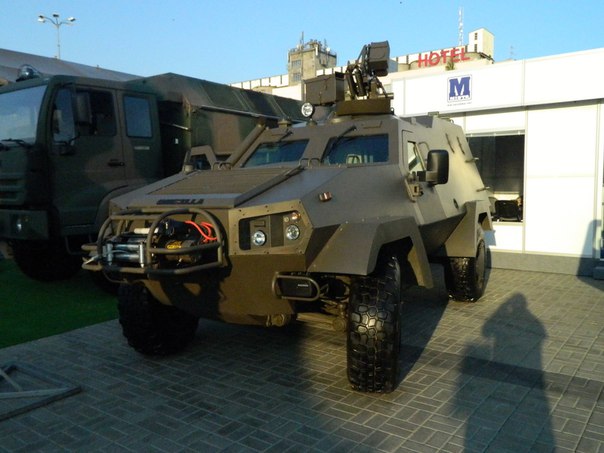Poland’s MoND spent PLN32 billion (U$10.4 billion) in 2014, an increase of about 2% over 2013’s initial defence budget of PLN31.4 billion budget – the highest in the its history - complying with a bill that requires the government to earmark 1.95% of Poland’s GDP for military spending.
![]() |
| The Polish Armed Forces are currently undergoing important modernisation programmes, and an increase of defence spending has been declared with 2015 being the year when agreements related to, e.g. the WISLA air defence systems or multi-role helicopters are to be concluded. Shown are the Jednostka Wojskowa Komandosów, the Polish 1st Special Commando Regiment, from the 1st Special Forces Regiment, the oldest Polish SOF unit. (All photos via author) |
In early June 2014,
Polish President Bronislaw Komorowski said that, “
Poland intends to raise its military expenditure to 2% of GDP from the current level of 1.95 percent.”
Mateusz Szczurek, Minister of Finance, said on 13 June 2014 that, “
it will be very difficult to achieve the goal of 2% of GDP allocated to the military in 2015.” When asked if he would raise taxes to fund the increase in spending, Szczurek said: “
Absolutely not.” Thus, President Komorowski’s intention to raise military expenditure will take place in 2016.
For 2014, however, the Polish MoND has earmarked PLN8.16 billion ($2.5 billion) for capital expenditures. To secure funds for purchases of weapons and military equipment, the ministry has created a special reserve fund of PLN3.48 billion ($1.07 billion), which was used for direct funding of 14 acquisition programmes in 2014.
By 2022, some PLN91.5 billion ($28.1 billion) will be set aside for key armament programmes, including new helicopters, air and air-defence systems, surface vessels, submarines, UAVs, and other types of armament. Funds saved in 2022 will be added to the reserve in 2023, ensuring that programmes are not scrapped due to potential austerity measures. Thus, it can be said that smart economic policies have created growth and, as a result, the willingness to finance national defence.
In an interview
Tomasz Siemoniak, Polish Minister of National Defence, said loud and clear: “
We have to say firmly what cannot be made in Poland and buy those – top quality - items from international partners.” This pragmatic approach clearly underlines priorities of and guidelines for the Polish defence sector.
![]() |
| Deliveries of upgraded MiG-29s to the Polish Air Force (PAF) are continuing, and negotiations for a second batch may begin soon. The upgrade, performed by WZL-2 Plant and based on a design and systems supplied by Israel Aerospace Industries (IAI), includes new avionics, cockpit instruments, and an advanced debriefing system. |
International Tenders/Foreign Purchases
Poland has indeed very ambitious and wide-ranging programmes for purchasing new military hardware. The conflict in the Ukraine has accelerated the procurement process and the wish to increase the Polish Armed Forces deterrent potential.
Around mid-February 2014,
Czeslaw Mroczek, Poland’s Deputy Minister of National Defence (DepMinDef), has warned that despite the success of the SPIKE Anti-Tank Guided Munition (ATGM) programme, he expects Poland’s negotiations with Rafael for further purchases to be “
challenging.” Despite these expectations, the MoND is planning to expand the SPIKE acquisition to include ATGM integration on vehicles, helicopters, and UAVs around 2015. In the words of Mrozcek: “
The SPIKE ATGM programme was one of the most successful acquisition programmes.”
As for the “challenging” nature of negotiations, Mroczek says that, “
much may depend on how negotiations on technology transfer and industrialisation pay out. Talks on transfer of technology are never easy or simple. If you talk about the transfer of certain industrial capabilities or advanced technologies, there will be challenges.” How negotiations will proceed this time around remains unknown for the moment.
Besides the SPIKE ATGM, the planned procurement of fifth-generation fighters was announced on 20 February 2014 by Gen. Tomasz Drewniak and Col. Dariusz Tarkowski, who represented the MoND at a meeting of the Polish Parliament’s National Defence Committee. The planned procurement of new fighter jets is part of a string of acquisition designed to modernise the Polish Air Force. Deliveries of fifth-generation fighters are expected to begin in 2022. In the words of
Beate Bialy, Head of the Public Affairs Department at the MoND: “
Due to the distant timeline the requirement for the new fighter jets will be a subject of ‘Operational Requirements Review’ to finally shape the programme for the ‘Polish Air Force 2017-2026 Technical Modernisation Plan’ purposes. The ‘Operational Review’ will provide much broader view on capabilities and budgeting.”
In air defence, according to official statement issued by the Polish Embassy in Washington on 21 April 2015, “
the Council of Ministers on the recommendation of MinDef Siemoniak has selected the Raytheon-built PATRIOT missiles for its medium-range air defence system WISLA. At the same time the Council of Ministers has authorised Siemoniak to further negotiate and conclude the agreement with the US authorities on behalf of the government of Poland.”
![]() |
| Poland’s ROSOMAK APCs will be equipped with the Rafael SPIKE missile, integrated with an unmanned turret system, developed by HSW – Stalowa Wola Ironworks in collaboration with WB Electronics, to be delivered to the Army starting from 2017. The Polish Army is also planning to integrate the SPIKE-LR missile with older ROSOMAKs, currently armed with HITFIST-30. |
The ministry hopes to sign the deal by the end of 2015. A total of eight PATRIOT batteries will be delivered by 2025, with two of these delivered within three years of the contract being signed. As part of the agreement the Polish defence industry will gain technology that will allow it to independently maintain the system once delivered. Although no official figures have been confirmed it is estimated that the PATRIOT contract will be worth PLN10-12 billion. According to DepMinDef Mroczek: “
We expect that the Polish industry will take about 50% participation in manufacturing.” The main Polish industry partner will be the Polish Armament Group (Polska Grupa Zbrojeniowa - PGZ).
Turning to rotorcraft, the KRUK helicopter will eventually replace the country’s Soviet-made Mi-24D HIND-D and Mi-24W HIND-E combat helicopters. According to the Public Affairs Department at the MoND, “t
he acquisition programme of the KRUK (Raven) attack helicopter will be launched in due time, in order to allow the deliveries in 2019. The final number of helicopters that may be ordered will be decided after the conclusion of the concept-analysis phase. The following companies entered the concept-analysis phase: AgustaWestland, Airbus Helicopters, Bell Helicopter, BIT SA, Boeing, Cenzin, Institute of Non-Ferrous Metals in Gliwice, PHO, Thales Polska and Turkish Aerospace Industries.”
On 21 April 2015, Poland has selected the
Airbus Helicopters EC725 CARACAL (aka H225M) as its preferred choice in multirole helicopter tender, subject to Army testing. At the same time, Poland has cut the overall requirement from 70 to 50 units. The Airbus Helicopters order consists of 34 specialised helicopters for ASW, Special Forces, MEDEVAC, and SAR missions, and 16 as transports. The cut means that Poland will extend the use of its existing fleet of 40 Mi-17s into the next decade. According to Siemoniak and representatives of the General Staff Poland needs to eventually buy 150 new helicopters in addition to the 50 CARACALs it has already selected.
Although heavily contested (see letter section), Airbus Helicopters said in early 2015 that if it won the helicopter tender it would set up a helicopter assembly line and a manufacturing centre for key helicopter parts in Lodz. In February 2015 it opened a R&D centre in Lodz and employs about 100 engineers. Finally, the MoND said that no value has been given for the contract at this stage but rather the figure is to be, “
presented after the conclusion of the offset arrangements and delivery.” Finalisation of the contract is anticipating in the third quarter of 2015 with deliveries commencing in 2017.
![]() |
| On 21 April 2015, Poland has selected the Airbus Helicopters EC725 CARACAL (H225M) as its preferred choice in multirole helicopter tender, contested by Sikorsky Aircraft and its subsidiary, PZL Mielec, and PZL Swidnik and AgustaWestland. |
Between 2014 and 2016, Poland is planning to spend PLN758 million on UAVs, with total expenditure to reach PLN3.5 billion by 2022. Poland is planning to purchase 15 Micro-UAVs, with deliveries expected by 2017, 51 Mini-UAVs via Project WIZJER (Viewfinder), and 27 short- and medium-range tactical UAVs. The MoND says that its selection will be based on key parameters of price (with a 60% weighing), operating costs (25%) and technical factors (15%). The total number of UAVs is to be delivered in a timeframe up to 2022 and beyond.
Kongsberg Defence & Aerospace and the Polish MoND have signed a contract worth NOK1.3 billion for a second battalion-sized Nadbrzezny Dywizjon Rakietowy (NDR) unit of the Naval Strike Missile (NSM) Coastal Defence System on 29 December 2014. At full strength, the battalion would comprise 50 (48 with combat and two with telemetry warhead) all-weather SSM with a range of up to 200 kilometres. The battalion is planned to reach full operational readiness in 2015. The new contract will also cover the capability to maintain the NSM system in Poland, involving
Military Industrial Electronic SA (Wojskowe Zaklady Elektroniczne - WZE SA). Kongsberg also plans to expand its co-operation with Polish industry to cover what
Harald Annestad, President of Kongsberg, described as, “
a broader technological arena.” Annestad did not elaborate further his statement.
Domestic Developments and Innovation
In addition to foreign purchases listed above, DepMinDef Mroczek said: “
We want to shorten the time of purchase of [domestic] systems. For instance, the self-propelled tracked WR-300 HOMAR MRLs have been given high priority.” The Polish Armament Inspectorate (PAI) has invited
Huta Stalowa Wola (HSW) into negotiations for the delivery of wheeled WR-300 HOMAR MRLs. The negotiations with HSW, which is owned by PGZ, are planned to begin in June, with the possible contract signature in the fourth quarter of 2015. The MoND is planning to purchase 60 WR-300 launchers by 2022. Mrozcek said: “
The first launchers will be delivered to the land forces in 2018.” The purchase is expected to be worth PLN2.61 billion.
The purchase of HOMAR is part of Polish artillery modernisation plan, one of technical modernisation priority tasks, includes also acquisition of 155mm KRAB self-propelled tracked howitzers, 155mm KRYL self-propelled wheeled howitzers, 120mm RAK self-propelled mortars, and artillery radars worth PLN7 billion.
The PAI signed two contracts on 27 June 2014 for the TYTAN (Titan) future soldier system worth more than $1.5 billion. Under a framework agreement, the MoND will finance R&D for the 27 different subcomponents within TYTAN, and will retain intellectual rights over the system. The framework agreement also guarantees that 13 companies involved in the development of the system will receive an order for at least 14,000 equipment sets between 2018 and 2022. This values the framework agreement at about PLN5 billion. The framework agreement, however, exclude some of the TYTAN subcomponent developments, such as the MSBS-5.56 modular firearms family manufactured by
Lucznik Radom for the Polish Army that are financed independently from the TYTAN programme. Lucznik Radom is currently preparing for a PLN8 billion government tender.
DepMinDef Czeslaw Mroczek said: “
The Polish industry has given a long-term contract for couple of billions zlotys, which gives the Polish industry a solid base for long-standing existence. The agreement gives industry the guarantee to keep the TYTAN programme running even if the government changes in next election.” Thus, it is important to underline consistency of the MoND in its procurement policy. According to Mroczek, “
the ministry is also keen to support potential export sales of the TYTAN system. The TYTAN programme provides the necessary boost to innovative approach in the defence sector.”
![]() |
| In December 2009, the Polish MoND cancelled the BWP-1M PUMA modernisation programme. Currently Polish Land Forces are considering a new multipurpose platform UPG-NG (Universal Tracked Chassis of New Generation) as the replacement for the aging BMP-1 fleet, as well as the basis for new light/medium tank with 120mm unmanned turret and autoloader. The platform is currently under development by OBRUM and could be put into full scale production by 2015. Its potential competitor is a licensed build CV90 offered by BUMAR Group. |
The first phase of R&D will conclude in 2015, and will be followed by a test and qualification phase running until 2017. The first low-rate initial production TYTAN sets will be tested by the 17 Mechanised Brigade from Miedzyrzecz. When this has been completed, serial production is scheduled to start in 2018.
On 17 July 2014, the Ministry of the Treasury decided to recapitalise
Mesko with PLN47 million to support the development of the PIRAT ATGM and creating a National Rocket Fuel Centre facility. The development is linked with the Polish Armed Forces plans to introduce a new, simpler, and less expensive ATGM system with a 2,500m range for dismounted infantry and medium UAVs. In Polish service, the PIRAT ATGM is intended to supplement SPIKE-LRs, which have a 4,000m range. State-owned Mesko has started development of the PIRAT ATGM, with first firing planned for mid-2015, while serial production beginning in 2017 or 2018.
Another important programme that is realised by Mesko in the field of rockets is the development of standard NATO calibre of 70mm launchers and rockets. So far, Polish helicopters have been using 57mm and 80mm unguided missiles, which came from post-Soviet arsenals. Along with the introduction of a new multipurpose helicopter, 70mm NATO rockets will become standard armament. Mesko also stated that it is planning to develop 7 mm laser guided missiles. This can be considered as another innovative project that will move Poland away from relying on its post-Soviet arsenal.
In early September 2014,
WB Group company Flytronic showcased its 110kg FlySAR design, which is described as having a flight endurance of 15 hours. The first of three UAVs was flown for the first time on 18 April 2014, under a project launched in mid-2013 and financed by the Polish National Centre for R&D. FlySAR is intended to carry sensors weighting up to a combined 45kg, included a synthetic aperture radar payload designed by the Military University of Technology in Warsaw. Other applications could include gathering SIGINT. Poland’s military is viewed as a potential customer, although Wojciech Szuminski, Vice-President of Flytronic, says that an undisclosed foreign customer is also looking at the system to patrol airspace over a national park as part of counter-poaching operations.
Besides domestic development and innovation, Poland also modernises its air fleet. The Polish Air Force (PAF) currently operates 32 Su-22 aircraft, and the MoND has confirmed that Poland will modernise 12 of its Su-22M4 strike aircraft and six Su-22UM3K trainers, with their airframe and engine lives to be extended for the next 10 years. The remainder of the craft are to be used for spare parts.
WZL-2 Military Aviation Plant in Bydgoszcz is to perform airframe upgrade of theSu-22s, while engine activities are to be conducted by
WZL-4 Plant in Warsaw. According to the Public Affairs Department of the MoND: “
The repair cost of each aircraft will cost an average PLN8.9 million, while the repair cost of each engine will cost PLN3.89 million.”
Deliveries of upgraded MiG-29s to the PAF are also continuing, and negotiations for a second batch may begin soon. The upgrade is being performed by WZL-2 Plant, and is based on a design and systems supplied by
Israel Aerospace Industries (IAI). The upgrade package includes new avionics, cockpit instruments, and an advanced debriefing system.
The comprehensive nature of these domestic developments shows that the defence industry is capable of accomplishing goals set by the government. The loud and clear statement by DepMinDef Mroczek that, “
the TYTAN programme running even if the government changes in next election,” underscore the importance of programmes for Poland and the determination of the MoND not to let these programmes to be derailed. Side by side with foreign procurement and domestic developments, the Polish defence industry undergoes significant structural changes that are discussed below.
Defence Industry Consolidation – Last but not Least
One of the key drivers behind consolidation is a desire to reduce duplication within the defence industry and to ensure Poland’s indigenous companies are capable of delivering on the planned PLN130 billion, 10-year modernisation programme.
PGZ is also needed to export the group’s products.
According to the Ministry of Treasury (MoT) Press Office: “
PGZ was registered on 5 December 2013, while the official inauguration took place on 2 September 2014. PGZ encompasses more than 60 companies and employs 17,500 workers with an annual turnover exceeding PLN5 billion. PGZ does not rule out the possibility that new entities will be included in the group if such an opportunity arises. In 2015, PGZ intends to focus on the business integration of all companies. Current shareholders of the PGZ are: PHO (34%), ARP (32%), and MoT (34%).”
In an interview MinDef Siemoniak said that he told the CEO of the former 12 companies under the MoND aegis that, “
they now face tougher challenges than before. The Polish Armed Forces expect top-notch equipment, while simply being a PGZ member does not mean a stream of ministry money regardless of achievements.” In other words, the laissez-faire attitude previously shared by the companies is over. Whether or not the new group will be competitive at home and abroad remains to be seen. The final word about the effect of consolidation and performance of PGZ has not yet been said.
The Nigerian MoD has ordered 1,000 5.56 BERYL assault rifles from Lucznik Radom.
Tomasz Nita, CEO of Lucznik hopes that his company’s, “
sale of the first 1,000 rifles to Nigeria will send a signal that the company weapons are worthy of interest also to other countries.”
In the meantime a new small arms factory was established in January 2014, operated by Lucznik Radom and is producing the MSBS-5.56 RADON modular firearms family for the Polish Armed Forces. Lucznik Radom is part of Poland’s state-run PGZ.
To conclude, Poland is indeed pursuing comprehensive procurement programmes with a clear vision to have modern, well-equipped Armed Forces. Foreign acquisition as well as domestic industry development, innovation, and home procurement are of the utmost importance to the defence industry that plays an important role in the process. Furthermore, consolidation of the industry should make it cohesive, enhancing its performance and showing potential customers worldwide that Polish-made military goods are really top-notch and competitive. Still, as long as the consolidation process has not been completed, and has not yet produced tangible results, many questions related to the robustness of the industry will remain unanswered.
Dr. Eugene Kogan is a noted expert in the field of defence technologies, and a regular contributor to MT. The author would like to thank Beate Bialy, Head of the Public Affairs Department at the MoND ,and anonymous officials from the Press Office of the MoT for the assistance in preparation of this article.





